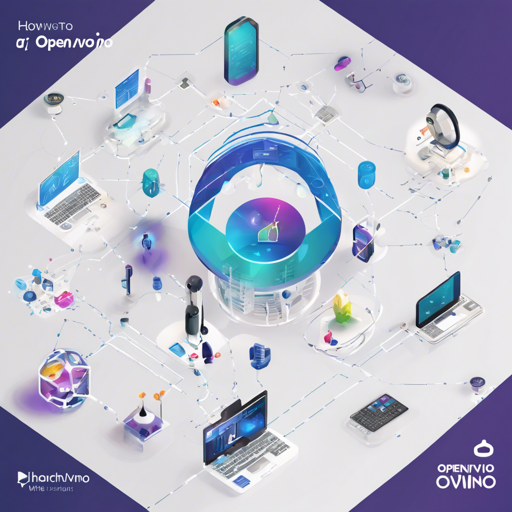Welcome to the world of OpenVINO™, a powerful open-source software toolkit designed to optimize and deploy deep learning models. This guide will walk you through the installation, usage, and troubleshooting for OpenVINO™, ensuring you have an incredible experience as you work with AI applications.
Installation
To unlock the potential of OpenVINO™, you’ll first need to install it. Here’s how:
-
- Choose your preferred distribution of OpenVINO from the official documentation.
- For quick installation, simply run the following command in your terminal:
pip install -U openvino- Make sure to check the system requirements and supported devices for detailed information.
Understanding OpenVINO™: An Analogy
Imagine OpenVINO™ as a magical kitchen filled with high-tech appliances. Each appliance represents a different deep learning framework, like TensorFlow or PyTorch, that cooks up unique recipes (models). Just as a chef can take ingredients from multiple recipes to create a delicious dish, OpenVINO™ allows you to optimize and deploy your models from various frameworks into one seamless experience.
Tutorials and Examples
Once installed, it’s time to start using OpenVINO™! Here are a few resources to help you:
- Check out the OpenVINO Quickstart example for deploying your first model.
- Explore the OpenVINO Notebooks for optimizing popular models, such as:
Code Examples: Inference with PyTorch and TensorFlow
Here are easy-to-follow code examples demonstrating how to run inference using OpenVINO™:
PyTorch Model
import openvino as ov
import torch
import torchvision
# Load PyTorch model into memory
model = torch.hub.load(torchvision, 'shufflenet_v2_x1_0', weights='DEFAULT')
# Convert the model into OpenVINO model
example = torch.randn(1, 3, 224, 224)
ov_model = ov.convert_model(model, example_input=(example,))
# Compile the model for CPU device
core = ov.Core()
compiled_model = core.compile_model(ov_model, 'CPU')
# Infer the model on random data
output = compiled_model(input=example.numpy())TensorFlow Model
import numpy as np
import openvino as ov
import tensorflow as tf
# Load TensorFlow model into memory
model = tf.keras.applications.MobileNetV2(weights='imagenet')
# Convert the model into OpenVINO model
ov_model = ov.convert_model(model)
# Compile the model for CPU device
core = ov.Core()
compiled_model = core.compile_model(ov_model, 'CPU')
# Infer the model on random data
data = np.random.rand(1, 224, 224, 3)
output = compiled_model(input=data)OpenVINO™ Ecosystem
Enhance your projects with the OpenVINO™ ecosystem:
- Optimum Intel – A simple interface to optimize Transformers and Diffusers models.
- Neural Network Compression Framework (NNCF) – Advanced model optimization techniques.
- GenAI Repository – Resources for developing Generative AI applications.
- OpenVINO™ Model Server (OVMS) – A scalable solution for serving optimized models.
- Intel® Geti™ – An annotation tool for computer vision.
Troubleshooting
Should you encounter issues while using OpenVINO™, here are some troubleshooting ideas:
- Ensure your system meets the system requirements.
- Double-check that you have the correct versions of Python and the deep learning frameworks installed.
- If you have issues with model importing, make sure the models are compatible with OpenVINO™.
- For further assistance, ask questions or seek out support in the GitHub Issues or connect through the Intel DevHub Discord server.
- For more insights, updates, or to collaborate on AI development projects, stay connected with fxis.ai.
Final Thoughts
With OpenVINO™, you can leverage advanced performance enhancements at runtime, all while ensuring model accuracy. As you embark on your deep learning journey, remember that the community is here to support you. At fxis.ai, we believe that such advancements are crucial for the future of AI, as they enable more comprehensive and effective solutions. Our team is continually exploring new methodologies to push the envelope in artificial intelligence, ensuring that our clients benefit from the latest technological innovations.
Additional Resources
For further information, check the following:
Happy coding with OpenVINO™!

